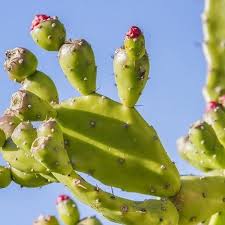Celebrating the National Day of China: Traditional Foods and Culinary Significance

National Day in China, celebrated on October 1st, marks the founding of the People’s Republic of China in 1949. It is one of the most important national holidays, with festivities that include grand parades, fireworks, and public gatherings. While these events showcase China’s historical achievements and its modern-day growth, the celebration would be incomplete without its rich culinary traditions. Food plays a vital role in Chinese culture, and during National Day, families and communities come together to enjoy a variety of special dishes that symbolize prosperity, unity, and good fortune. In this article, we will explore the significance of food during China’s National Day and highlight some of the traditional dishes that are commonly enjoyed during this festive occasion.
1. The Importance of Food in Chinese Culture
Food has always been at the heart of Chinese culture. It is not just about sustenance but also about bringing people together, celebrating life’s milestones, and expressing gratitude. The preparation, presentation, and consumption of food hold deep cultural and symbolic meanings. In China, festivals and national holidays like National Day are closely associated with certain foods, each of which carries its own significance.
For example, during the Lunar New Year, dumplings are considered a symbol of wealth and prosperity, while mooncakes are eaten during the Mid-Autumn Festival to celebrate family reunion. Similarly, National Day is an opportunity for Chinese people to indulge in food that represents unity, growth, and national pride. Whether shared in a family gathering or a large public feast, the food on National Day reflects the spirit of the holiday.
2. Traditional Foods for National Day
China’s vast culinary diversity means that food customs can vary significantly across regions. However, there are several traditional dishes that are commonly prepared and enjoyed during National Day celebrations. These dishes symbolize national unity, prosperity, and the importance of family, which are central to the Chinese ethos.
a. Peking Duck (北京烤鸭)
One of China’s most iconic dishes, Peking Duck, is often associated with the festive nature of National Day. Originating from Beijing, Peking Duck is known for its crispy skin and tender meat, served with thin pancakes, hoisin sauce, and scallions. The dish is a symbol of China’s rich culinary history and is considered a national treasure. During National Day, it is often prepared for family banquets and large gatherings, where it is shared and enjoyed with loved ones.
The preparation of Peking Duck is an intricate process. The duck is seasoned, inflated, and roasted in a wood-fired oven until its skin becomes golden brown and crisp. The crispy skin is carefully separated from the meat and wrapped in the thin pancakes with a touch of sauce and a few slices of scallions. The dish’s popularity during National Day is not just because of its delicious taste, but because it represents China’s cultural heritage and the pride of the nation.
b. Mooncakes (月饼)
Though mooncakes are traditionally associated with the Mid-Autumn Festival, they are also a popular treat during National Day celebrations. This could be because National Day falls shortly after the Mid-Autumn Festival, and many families continue to enjoy mooncakes during the early days of October. Mooncakes are round pastries filled with various fillings, including lotus seed paste, red bean paste, or salted egg yolk, often symbolizing completeness and family unity.
In the context of National Day, mooncakes symbolize the unity of the Chinese people and the harmony of the nation. The round shape of the mooncake reflects the idea of togetherness and continuity. During National Day, mooncakes are typically shared among family members, friends, and colleagues, reinforcing social bonds and celebrating collective success.
c. Noodles (长寿面)
Noodles are a staple in Chinese cuisine and hold symbolic meaning in various celebrations, including National Day. The long, unbroken strands of noodles are believed to represent longevity, happiness, and good health. Eating noodles during National Day is seen as a wish for a long and prosperous life for individuals and the nation as a whole.
While noodles can be prepared in many different ways, a popular choice for National Day celebrations is cháng shòu miàn (长寿面), or longevity noodles. These noodles are typically served in a broth with vegetables, meats, and sometimes eggs. The dish is a reminder of the importance of well-being and the hope for a prosperous future for the country.
d. Chop Suey (杂碎)
Although chop suey is often associated with Western Chinese cuisine, it has deep roots in Chinese culinary traditions and is a dish that can be found in various regions of China. Chop suey consists of a mix of stir-fried vegetables, meat, and sometimes seafood, flavored with soy sauce and other spices. It is considered a festive dish because of its colorful ingredients, which represent harmony and the diversity of the Chinese people.
For National Day, chop suey is typically served during family meals or gatherings, symbolizing the strength that comes from unity in diversity. The various ingredients are said to reflect the different regions of China coming together as one nation. The dish is also symbolic of the nation’s growth and development, with a balance of both tradition and modernity.
e. Hot Pot (火锅)
Hot pot is a beloved dish that is commonly enjoyed during national celebrations and family gatherings in China. It involves a large pot of simmering broth placed in the center of the table, with an assortment of raw ingredients such as vegetables, meats, tofu, and seafood. Diners cook their food by dipping it into the broth and eating it as it cooks. The act of sharing a hot pot meal symbolizes warmth, unity, and the sharing of abundance.
Hot pot is a versatile dish that can be tailored to suit individual tastes, with various broths and dipping sauces. Its popularity during National Day stems from its communal nature, encouraging people to gather around the table and share a meal. This reflects the unity and togetherness that are central themes of the National Day celebrations.
f. Chinese Dumplings (饺子)
Dumplings are another staple of Chinese cuisine, and they are often prepared for festive occasions like National Day. Dumplings are typically filled with ground meat, vegetables, and seasonings, all wrapped in a thin layer of dough. They are either boiled, steamed, or pan-fried, and are enjoyed with dipping sauces made from soy sauce, vinegar, and chili oil.
Dumplings are symbolic of wealth and prosperity, as their shape resembles ancient Chinese gold or silver ingots, which were used as currency. During National Day, families often make dumplings together, reinforcing family ties and traditions. The act of making dumplings is not only a culinary practice but a way of honoring family heritage and contributing to the celebration of the nation’s prosperity.
g. Steamed Buns (包子)
Steamed buns, or bāozi, are another favorite food that is often served during National Day celebrations. These soft, fluffy buns are filled with a variety of ingredients, including pork, vegetables, or even sweet fillings. They are steamed to perfection, making them a comforting and satisfying dish.
The steamed bun holds significance in Chinese culture as a symbol of unity and prosperity. The round shape of the bun represents wholeness and good fortune, while the filling signifies abundance and harmony. Steamed buns are often shared during family gatherings, further emphasizing the themes of unity and togetherness during National Day.
3. Regional Variations in National Day Foods
While the dishes mentioned above are commonly enjoyed during National Day celebrations, it is important to note that food customs can vary across different regions of China. Each region has its own unique culinary traditions, which are reflected in the dishes prepared during the holiday.
For example, in the northern regions of China, jiaozi (dumplings) are a popular choice, while in the southern regions, rice cakes and steamed buns are more commonly eaten. In the eastern regions, seafood plays a significant role in the National Day feast, while in the western regions, lamb and beef are often favored. Despite these regional differences, the overarching theme of unity and prosperity remains central to the celebration of National Day.
4. The Role of Food in National Pride
Food is not only a source of nourishment and enjoyment during National Day but also a means of expressing national pride. The preparation and sharing of traditional Chinese dishes reinforce the values of unity, prosperity, and cultural heritage that are at the heart of National Day celebrations. By gathering together to enjoy these special foods, Chinese people demonstrate their connection to their shared history, culture, and identity.
National Day is a time to reflect on China’s remarkable journey, from its ancient civilizations to its modern achievements. The food enjoyed on this day is a reminder of the resilience, creativity, and strength of the Chinese people, as well as the importance of family, community, and tradition.
5. Conclusion
China’s National Day is a time for celebration, reflection, and unity, and food plays a vital role in bringing people together. From iconic dishes like Peking Duck and Mooncakes to more regional specialties like Hot Pot and Dumplings, the foods enjoyed during National Day celebrations reflect the rich diversity and deep cultural heritage of China. These dishes symbolize prosperity, good fortune, and the strength of the Chinese people as they come together to honor their shared history and look toward a bright future. Whether through the preparation of Peking Duck, the enjoyment of Mooncakes, or the communal nature of Hot Pot, food serves as both a symbol and a medium for celebrating the spirit of National Day in China.

